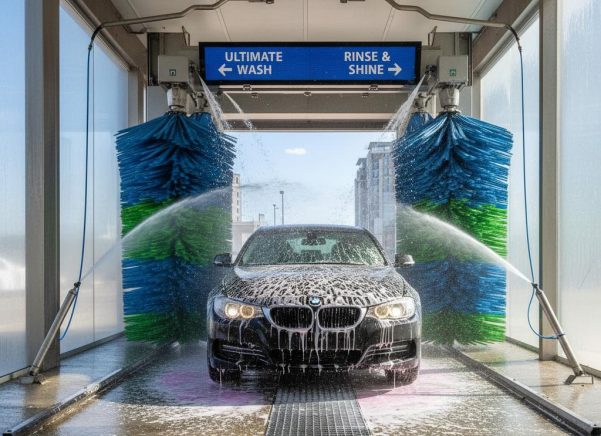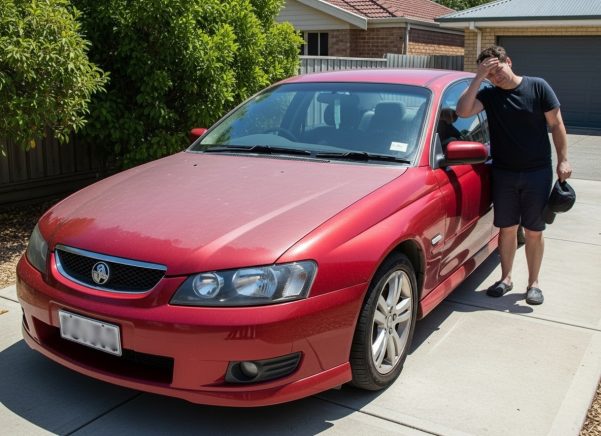I started investigating those $12 express car wash signs after noticing something disturbing. The math didn’t add up.
How do these businesses profit at that price point? The answer reveals a costly deception.
The Volume Trap
Quick wash operations succeed on pure volume and convenience. But here’s what they’re not telling you.
There’s zero care taken. No quality checking.
To handle the dirt volume, they use harsher chemicals that strip your coating’s hydrophobic qualities. The fast brushes create a “spider webbing” effect on paintwork that reduces gloss permanently.
Speed eliminates final inspection. You get none of the quality control that detailed washing provides.
The Damage You Can’t See
Even “touchless” washes deceive customers. Despite claims of filtered water, most facilities use unfiltered city water with high calcium deposits.
When warm air dries your vehicle, those minerals embed as water spots in your clearcoat or ceramic coating.
The industry knows this happens. Damage claims represent 0.61% of revenue for express wash facilities. That’s $9,150 annually for a typical $1.5 million operation.
They budget for the damage they cause.
The Environmental Cost
Each quick wash consumes approximately 150 liters of water per vehicle. Major facilities use over 1.3 million gallons daily.
That water becomes heavily polluted with chemicals and ends up in waterways. The environmental impact compounds with every $12 convenience choice.
The True Financial Calculation
Here’s the reality most customers miss completely.
Vehicles with well-maintained paint retain up to 10% more value compared to those with visible damage. On a $45,000 vehicle, that’s $4,500 in preserved value.
Your $12 convenience wash creates microscopic damage that accumulates over time. The spider webbing becomes visible. The water spots become permanent. The chemical stripping removes protective layers.
Eventually, you’ll need paint correction or full restoration. Professional paint correction starts at $300 for minor correction and can reach several thousand for more extensive damage.
That $12 wash just cost you hundreds in depreciation and repair.
The Awareness Gap
Most customers never connect their quick wash routine to paint degradation. They see the gradual dulling and assume it’s normal aging.
The damage compounds silently while you think you’re saving money.
I’ve learned that convenience often masks hidden costs. In car washing, those costs are permanent and expensive.
Your vehicle deserves better than zero care and harsh chemicals. The real question is whether that convenience is worth thousands in long-term damage.




